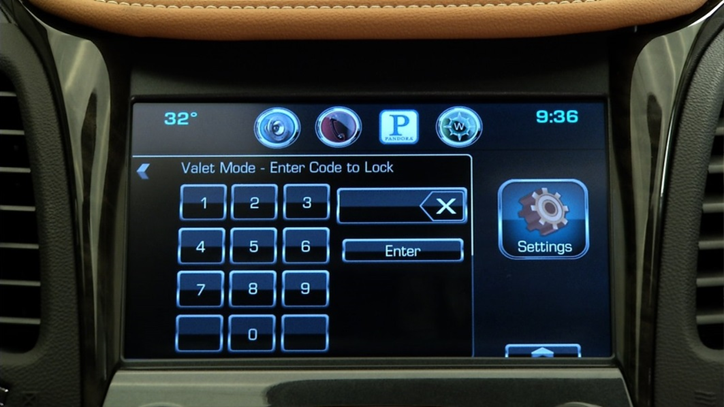Two technologies of two major brands in Auto industry. The new Chevy Impala comes with a little bit of James Bond inside. Press a button and – voila! – a secret storage bin large enough to hold valuable items like an MP3 player, mobile phone or wallet is unveiled behind the 8-inch MyLink center infotainment & navigation display. Owners can enter a PIN code and lock Valet Mode’s sliding door, securing high-value items like smartphones.
It’s more than just a second, smaller glovebox. As an extension of GM’s MyLink connectivity, it physically locks the bin, plus the information that’s been shared between your phone (via Bluetooth or hard line) and the system. When Valet Mode is engaged, information is disabled so that no one can view it in the instrument panel until the PIN code is entered twice to open the door and unlock the information. Each use of the secure door and system information prompts a PIN, so you can repeatedly use the same one or select new ones on each occasion. As part of the Impala’s MyLink infotainment system, Valet Mode is standard equipment on the LT and LTZ trim level Impalas.
“As we started our next-generation MyLink project, we saw a big privacy concern and opportunity,” says Matt Highstrom, GM’s MyLink Interaction Designer. “Smartphones are prevalent and privacy is a growing issue. We didn’t have a good storage location at the time. If we did define a new space for locating a smartphone, it would also give us the opportunity to offer charging the device there. With our Valet Mode, all sensitive info is secure. It operates much like a hotel safe with a user-defined 4-digit PIN for security.”
Chevy’s new Impala was the first to get the Valet bin early this year. The new Corvette and new trucks include it now, as well. Providing security for your more valuable electronics and personal items, MyLink with valet mode is a worthy AOL Technology of the Year contender.
Tesla Motors has rocked the car world by designing, building – but most importantly, selling viable and desirableelectric cars. With 2013 sales expected to hit 20,000 cars, and a forecast of 40,000 units in 2014,Teslas are gaining recognition and popularity.
However, true luxury means freedom. Freedom to go anywhere at anytime. To allay the fear of limited range (often called “range anxiety”) Tesla has begun building a no-cost network of fast-charging stations using at distances across the U.S. meant to make a cross-country drive feasible.
The fast-charging stations work as advertised, and represent a bold effort by the upstart company to not only build world-class cars, but the infrastructure to support them. For this reason, the Tesla Supercharger was voted a finalist for Technology of the Year.
Make no mistake. Tesla owners are meant to re-charge their vehicles at home. The cars–with ranges of 208 miles and 265 miles for the 60 kW/h and 85kW/h battery versions, respectively–have plenty of range in between re-charges for most daily commuters.
It takes 20-30 minutes to net a 50% charge in a Tesla Model S (with the 85kWh battery), after which the car can go another 3 hours of driving which equates to roughly 150 miles. With 40 total minutes of charging time, that same car will be 80% charged, more than enough to travel between charging stations in locales where they exist. For a full 100% charge, it will require another 35 minutes, or 1:15 in total.
Each station Tesla is building will have up to twelve stalls while some will have solar panels to help generate electricity. Charging for Tesla owners is free.
Tesla founder Elon Musk announced a family road trip expected in March, 2014 with his own five kids in a Tesla. He predicts this 3,200-mile trip will take “only” 9 hours of charging in total to complete. Not as handy as a gasoline-powered car, but a cross-country ride is to make a point about EV viability.



